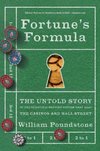Sublime
An inspiration engine for ideas
Back in 1966, a goateed Stanford professor named Bill Sharpe developed a formula that has since become as common in investment-speak as RBIs are in baseball-speak. The formula looks like this:
Russell Wild • Exchange-Traded Funds for Dummies
Investment Principles.pdf
drive.google.com

Fortune's Formula: The Untold Story of the Scientific Betting System That Beat the Casinos and Wall Street
amazon.com
The risk-free rate is simply the return of Treasury bills. A higher Sharpe ratio is better, and a good rule of thumb is that risky asset classes have Sharpe ratios that cluster around the 0.20 to 0.30 range.
Meb Faber • Global Asset Allocation: A Survey of the World’s Top Asset Allocation Strategies

Embracing Paradox
Exploring the balance between opposing principles in investment, such as trust versus skepticism, patience versus urgency, and transparency versus confidentiality, emphasizing the importance of harmony in decision-making.
static1.squarespace.com